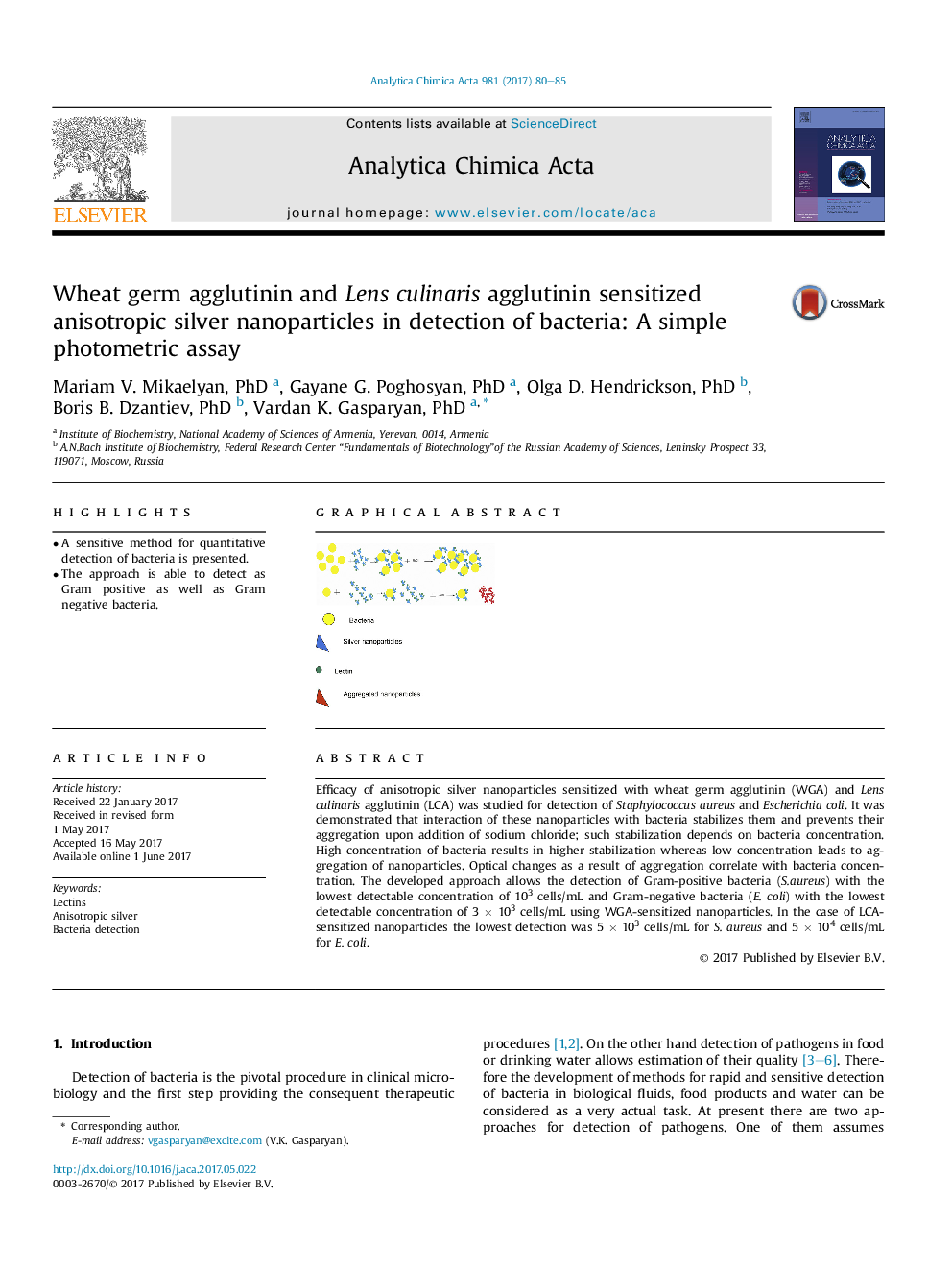| کد مقاله | کد نشریه | سال انتشار | مقاله انگلیسی | نسخه تمام متن |
|---|---|---|---|---|
| 5131026 | 1490851 | 2017 | 6 صفحه PDF | دانلود رایگان |

- A sensitive method for quantitative detection of bacteria is presented.
- The approach is able to detect as Gram positive as well as Gram negative bacteria.
Efficacy of anisotropic silver nanoparticles sensitized with wheat germ agglutinin (WGA) and Lens culinaris agglutinin (LCA) was studied for detection of Staphylococcus aureus and Escherichia coli. It was demonstrated that interaction of these nanoparticles with bacteria stabilizes them and prevents their aggregation upon addition of sodium chloride; such stabilization depends on bacteria concentration. High concentration of bacteria results in higher stabilization whereas low concentration leads to aggregation of nanoparticles. Optical changes as a result of aggregation correlate with bacteria concentration. The developed approach allows the detection of Gram-positive bacteria (S.aureus) with the lowest detectable concentration of 103 cells/mL and Gram-negative bacteria (E. coli) with the lowest detectable concentration of 3 Ã 103 cells/mL using WGA-sensitized nanoparticles. In the case of LCA-sensitized nanoparticles the lowest detection was 5 Ã 103 cells/mL for S. aureus and 5 Ã 104 cells/mL for E. coli.
Interaction of lectin sensitized nanoparticles with bacteria stabilizes them and prevents their aggregation upon addition of sodium chloride. Such stabilization depends on bacteria concentration. High concentration of bacteria results in higher stabilization whereas low concentration leads to aggregation of nanoparticles.161
Journal: Analytica Chimica Acta - Volume 981, 15 August 2017, Pages 80-85